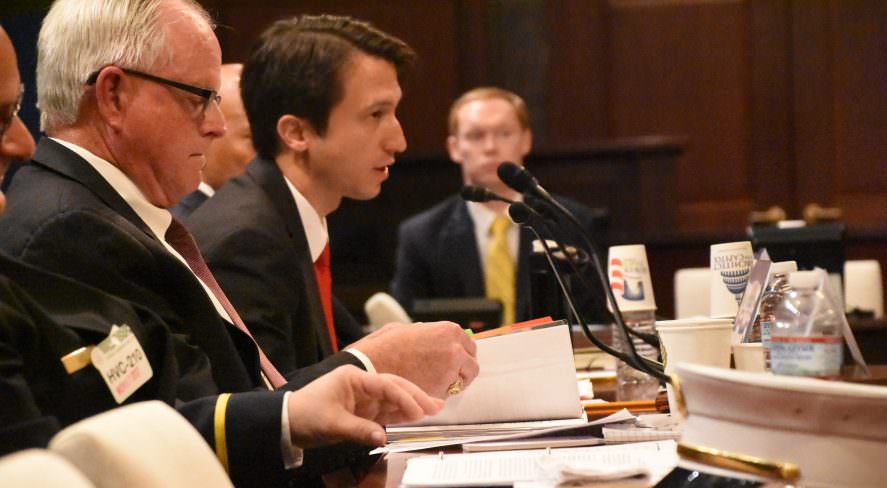Weighing the Effectiveness of Homeland Security Science and Technology

SIA’s Jake Parker testified before a panel of the House Homeland Security Committee on Nov, 7, 2017.
Collaboration is strong between the security industry and the Department of Homeland Security (DHS) Science and Technology (S&T) Directorate but the industry harbors some concerns about the future of specific programs and their effectiveness, testified Jake Parker, Director of Government Relations for the Security Industry Association (SIA), before Congress on Tuesday.
In a hearing titled “How Effective is the Science and Technology Directorate?: Stakeholder Perspectives” convned by the Emergency Preparedness, Response and Communications Subcommittee, SIA presented the outlook of private industry collaborating with the federal research arm to a panel chaired by Rep. Dan Donovan, R-N.Y.
Emphasizing the focus of DHS Critical Infrastructure Security and Resilience Month, Parker praised the performance of the DHS Safety Act Office. SAFETY Act certifications have been a success in expanding the deployment of security technology through providing liability protection to providers of security goods and services, Parker said. However, demand for certification is high. Congress should ensure adequate funding by providing a line-item appropriation for the S&T SAFETY Act Office each year.
The business case for involvement in S&T programs would be much stronger if each effort was championed by a DHS operational component that is involved at some level from the beginning of the process with a commitment to making use of the technologies explored by appropriate research programs, Parker said.
DHS S&T should focus priorities on operationalizing private sector security technology innovations for government use, he added. S&T is moving in the right direction as far communicating with industry in part by releasing a new Industry Guide in October.
House-passed DHS appropriations for fiscal 2018 would cut the research and development budget at S&T by 22 percent. If enacted, these cuts could limit the development of important technologies and opportunities for SIA members to partner with S&T, Parker said. For example, SIA members currently are working on specific projects involving the development of chem-bio sensors and the enhancement of cybersecurity for mobile applications, and these efforts would suffer under proposed budget cuts.
If properly funded, the DHS S&T Directorate would benefit significantly from contributions from the security industry, particularly with concern to priorities like biometrics collection and utilization, robotics and autonomous systems, enhanced situational awareness, identity credentialing and access management, automated vetting and other technologies.
For all written testimony on the hearing and archived video, visit the House Homeland Security Committee website.
